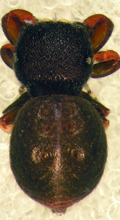Latest News Archive
Please select Category, Year, and then Month to display items
08 December 2020
|
Story Dr Nitha Ramnath
![]()
The Directorate: Community Engagement will be virtually celebrating the launch of the new E-Engaged Scholarship Strategy on 10 December 2020.
Most of the face-to-face community engagement activities could not take place this year due to the outbreak of the COVID-19 global pandemic and related physical distancing restrictions. Therefore, an E-Engaged Scholarship Strategy has been developed as an adapted virtual participatory learning environment in collaboration with our community, business, and government partners. This E-Engaged Scholarship Strategy seeks to make information accessible to communities through dialogue on engaged learning, training, and research for citizens to take actively part in developing their own lives and that of their surrounding communities.
Details of the launch:
Date: 10 December 2020
Time: 16:00 (CAT)
Platform: Microsoft Teams
Join on your computer or mobile app
Click here to join the meeting
For more information, contact Billyboy Ramahlele (Director: Community Engagement) ramahpm@ufs.ac.za
UFS entomologists describe a new spider species
2014-02-19
|
 |
It is about 3mm in size and almost looks like a ladybird, but this new spider is the cause of great excitement at the University of the Free State’s (UFS’s) Department of Zoology and Entomology.
The new species of spider, now known as Rhene amanzi, was recently described for the first time and was ‘introduced’ to other arachnologist at the recent congress of the African Arachnology Society at Amanzi Private Reserve.
Dr Charles Haddad, senior lecturer in the UFS’s Department of Zoology and Entomology, said they already stumbled upon the male spider in 2010 when a student was doing research at the reserve. After a very long process, the spider was described and a couple of weeks ago, whilst at the congress, they also found the female.
“Up to now we only know that the spider lives in trees in the Brandfort area. The range could be wider, but since it was only described recently, other arachnologists will only now be able to identify accurately.”
Dr Haddad says they still have to determine how many eggs the female is able to lay, what the spider’s life cycle looks like and what their habitual preferences are.
“What we do know is that it probably isn’t poisonous and that the spider imitates a ladybird in order to protect itself against predators.”